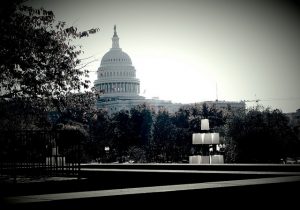 I’m back after a couple of weeks of travel and instead of focusing about what happened over the last couple of week, what didn’t happen is probably more significant.
I’m back after a couple of weeks of travel and instead of focusing about what happened over the last couple of week, what didn’t happen is probably more significant.
What Happened
Six months into Fiscal Year 2018, Congress finally passed the FY 2018 budget. Congress essentially ignored the President’s request to slash worker safety and health programs.
What Didn’t Happen
OSHA’s Susan Harwood Worker Training Grant Program was not eliminated. The Trump administration proposed to eliminate the $11 million program that provides lifesaving, hands-on training for vulnerable workers and employees of small businesses. The bill also requires OSHA to spend $4.5 million on the Harwood program’s “Capacity Building” Developmental grants. These grants extend for up to four years and are intended to help organizations develop permanent capacity. Trump’s OSHA had eliminated these grants in last year’s grant round, replacing them with 1-year Targeted Training grants. The House had voted to eliminate the program, although the Senate voted to keep it and the Senate language was adopted in the final budget.
The Chemical Safety Board was not eliminated. The CSB conducts root cause analyses of chemical disasters and issues recommendations to government agencies like OSHA and EPA, as well as industry associations and labor unions.
OSHA’s budget was not slashed, nor was MSHA’s, although the OSHA funding level remains below FY 2010, which has resulted in staff cuts in most of the OSHA programs. The House had proposed cutting OSHA’s enforcement budget by $13.5 million, or 6.5% below the FY 2017 budget
Funding for the National Institute for Occupational Safety and Health (NIOSH) was not slashed by 40% as Trump’s budget had proposed.
The budget bill did not included language (riders) that would have prohibited implementation or enforcement of OSHA‘s 2016 “electronic recordkeeping” rule and a measure to block enforcement of OSHA‘s silica standard, as some Republican members had wanted.
Restaurant servers will not have their tips stolen by management. As you may remember, the Labor Department issued a “tip sharing” proposal without an economic analysis showing that tipped employees stood to lose billions of dollars from employer skimming tips from servers. The budget bill included language that would prohibit tip skimming by restaurant employers.
And, finally, Scott Mugno has not yet been confirmed by the Senate to head OSHA, leaving OSHA leaderless — over 14 months into the Administration.
What’s Next?
None of this, of course, happened on its own. These victories were achieved because workers, unions and their representatives and supporting organizations made their voices heard and the Democratic leadership in the House and Senate stood strong in support of workers’ rights.
Meanwhile, Trump’s FY 2019 budget contains many of the same cuts — elimination of the Harwood Grants and the Chemical Safety Board, and again whacks NIOSH with a 40% cut. Coal mining enforcement is cut, and Trump is proposing to eliminate two labor-management OSHA Advisory Committees. So much for “cooperation over confrontation.”
Of course, despite the fact that the fiscal year ends on September 30, there is no chance that a new budget will be approved before the November Congressional elections. And if the Democrats take over the House (and the Senate??), these proposed cuts will never see the light of day.
So keep your eyes on the November elections, and when you’re talking to the candidates, make sure you discuss the importance of the safety and health budget and the need for strong enforcement.